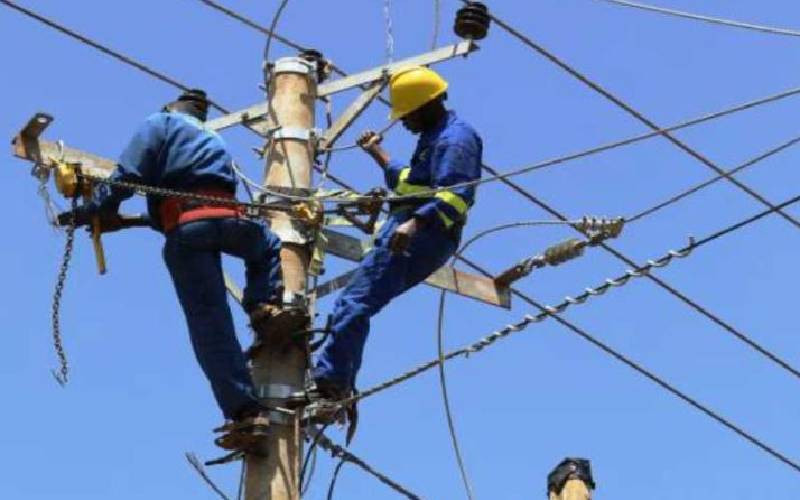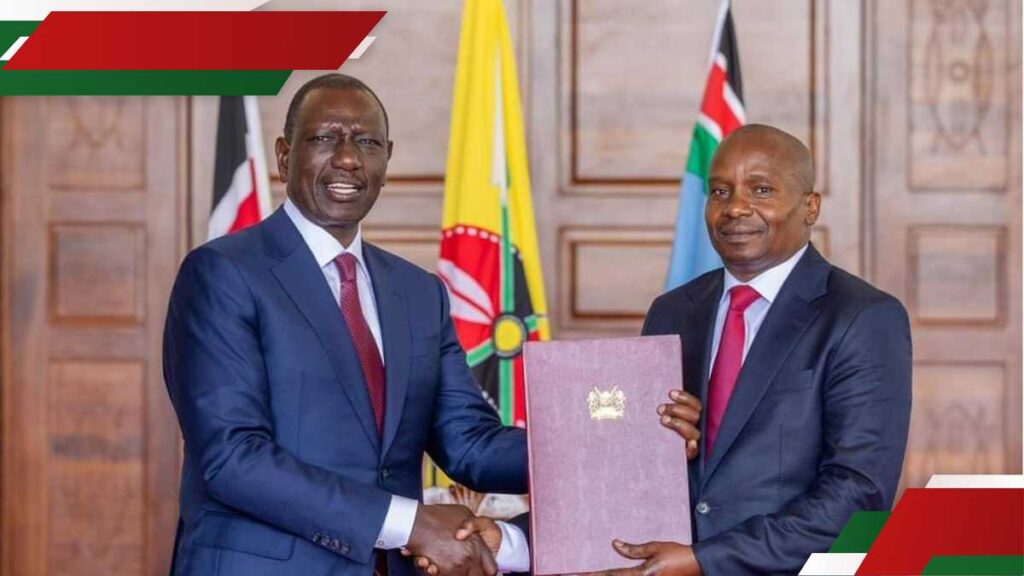Energy Cabinet Secretary Opiyo Wandayi has told the Senate that the Kenya Power and Lighting Company targets to raise Sh 200 billion as revenue from diversified sources in a five-year strategic plan from the Financial Year 2023 to Financial 2028.
Wandayi told the Senate Energy Committee that the alternative revenue streams include consultancy services in design and construction of power systems, maintenance of power equipment and network for our high voltage metered customers.
The Cabinet Secretary who was responding to a question by Nandi Senator Samson Cherarkey who sought to know the alternative revenue streams that Kenya Power is currently exploring to diversify its income said these efforts will ensure the company gives fair returns to its shareholders.
“Kenya Power does pole leasing as the appointed contractor for the ICT Authority for Sh 100,000 km of Government Digital Superhighway project and offering maintenance services for the same, training and capacity building of Energy Sector staff and contractors through its Institute of Energy Studies and Research,” said Wandayi.
The Cabinet Secretary said that KPLC continues to install smart meters for home and business users in a bid to reduce the manual interventions for revenue collection with this seeing a reduction of debt for both large power users, small and medium enterprises and urban domestic users.
Kisumu Senator Tom Ojienda asked Wandayi to state the root cause of the continued nationwide failure to maintain stable electricity during the rainy season and provide a region-by-region analysis of the most affected areas and also the level of preparedness to manage power distribution.
Wandayi said currently the country’s installed generation capacity is 3080 MW against a recorded peak demand of 2,316 MW and that from the total installed generation capacity 20 percent is from variable renewable sources like wind and solar.
The Cabinet Secretary told Senators that the total network is approximately 320,000 km with over 80 per cent of this comprising distribution networks which includes both medium and low voltage lines.
“The main causes of the frequent outages being experienced in the country are transient interruptions on distribution lines caused by momentary interference of the electricity network and sustained fault incidences due to failure of various equipment on the network,” said Wandayi.
He also cited the controlled interruptions on distribution networks attributed to planned outages where feeders are taken out to carry out repairs on various equipment and temporary load shedding or under frequency operations implemented during peak hours across all regions.
Ojienda asked the Cabinet Secretary to state the level of preparedness by KPLC to manage power distribution during rainy periods including existing preventive strategies, infrastructure audits and disaster response protocols.
Wandayi said KPLC is undertaking transmission and distribution network refurbishment preventive maintenance and vegetation management to improve grid resilience while continuously assessing and enhancing the capacity of lines and primary substations to take care of the growing demand.

























